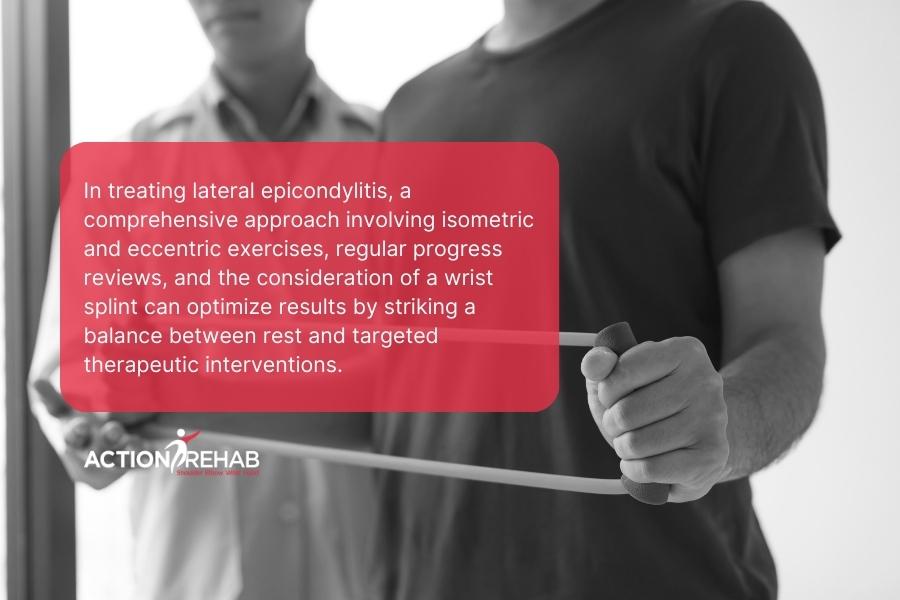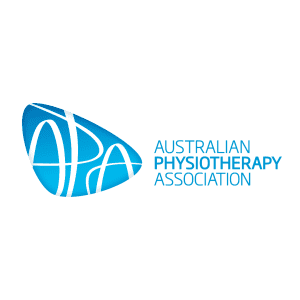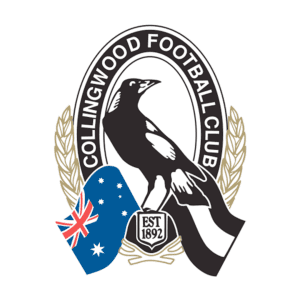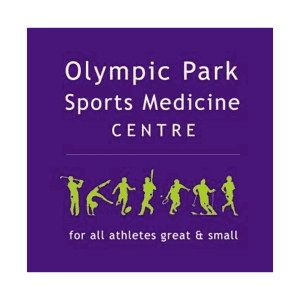What is tennis elbow?
Lateral epicondylitis (also known as tennis elbow) is one of the most common conditions affecting the upper limb (Menta et al, 2015). A tendinopathy involving the extensor muscles of the forearm, it is common in people with jobs requiring repetition such as electricians, carpenters, gardeners and office-based workers (Whaley & Baker, 2004). Pain and weakness with wrist and finger extension result in significant functional disability for patients (Buckle & Devereux, 2002) and many people seek the expert advice of a Hand Therapist.
Treatment options for tennis elbow
The aims of treatment for tennis elbow are to provide pain relief, preserve movement and function and increase wrist and elbow stability (Kraushaar & Nirschl, 1999). Treatment options include eccentric and isometric exercises, stretches, soft tissue techniques, acupuncture, joint mobilisation and splinting.
Isometric exercise
Extensor carpi radialis brevis (ECRB) is the muscle most commonly involved in lateral epicondylitis and has a role in static stabilisation of the wrist (Walz et al, 2010). For this reason, isometric wrist exercises should be part of a Hand Therapy management plan for lateral epicondylitis. Isometric exercise has been found to decrease pain both locally and globally during and after contracture (Naugle et al, 2012; Lee et al, 2018).
Eccentric exercises
The lateral elbow contains areas that are relatively hypovascular, meaning the tendon is unable to respond adequately to repetitive forces through the muscle (Davenport et al, 2005). A study by Alfredson (2003) reported that eccentric muscle contraction assists with neovascularisation and can promote healing in tendinopathies such as lateral epicondylitis. Eccentric exercises are therefore an important part of Hand Therapy management.
These exercises can be performed by the patient as part of a home exercise program or in a clinical setting with supervision by the treating Hand Therapist. A study by Menta et al (2015) found that supervised eccentric strengthening exercises combined with static stretching were more effective than these same exercises performed at home. This highlights the importance of regular reviews to ensure optimum results for our patients.
Thermoplastic wrist immobilisation splint
Patients are commonly advised to exercise only within a pain free range of movement and refrain from exercises aggravating their pain. There is however long-term benefit in loading the tendon and building tissue tolerance which may initially cause some pain (Smith et al, 2019). A thermoplastic wrist immobilisation splint can be worn initially full time in the acute phase and then weaned to night only throughout the period of rehabilitation. This will help the patient achieve the fine balance between working hard enough to increase strength and stability while resting adequately to manage inflammation and aggravation.
Final thoughts on the importance of eccentric and isometric exercise in the treatment of tennis elbow
In conclusion, there are many treatment options available in the Hand Therapy treatment of lateral epicondylitis. Isometric and eccentric exercises should be included, and better results may be gained with regular appointments to review exercises so they can be progressed accordingly. A wrist splint should be considered to help the patient balance rest and exercise.
References
- Alfredson H. Chronic midportion Achilles tendinopathy: An update on research and treatment. Clin Sports Med, 2003, 22:727-741.
- Buckle PW, Devereux JJ. The nature of work-related neck and upper limb musculoskeletal disorders. Appl Ergon 2002; 33:207-17.
- Davenport TE, Kulig K, Matharu Y, Blanco CE. The EdUReP Model for Nonsurgical Management of Tendinopathy. Phys Ther. 2005;
- Kraushaar BS, Nirschl RP: Tendinosis of the elbow (tennis elbow). Clinical features and findings of histological, immunohistochemical, and electron microscopy studies. J Bone Joint Surg Am, 1999, 81:259-278.
- Lee J, Kim T, Lim K. Effects of eccentric control exercise for wrist extensor and shoulder stabilisation exercises on the pain and function of tennis elbow, Journal of Physical Therapy Science, 2018 Apr; 30 (4): 590-594
- Menta R, Randhawa K, Cote P, Wong JJ, Yu H, Sutton D, Varatharajan S, Southerst D, D’Angelo K, Cox J, Brown C, Dion S, Mior S, Stupar M, Shearer HM, Lindsay GM, Jacobs C, Taylor-Vaisey A. The Effectiveness of exercise for the management of musculoskeletal disorders and injuries of the elbow, forearm, wrist and hand: A systematic review by the Ontario Protocol for Traffic Injury Management (OPTIMa) Collaboration, Journal of Manipulative and Physiological Therapeutics, September 2015; 38 (7): 507-520.
- Naugle KM, Fillingim RB, Riley III JL. A meta-analytic review of the hypoalgesic effects of exercise,
J Pain 2012 Dec; 13 (12): 1113-1150. - Smith BE, Hendrick P, Bateman M, Holden S, Littlewood C, Smith TO, Logan P. Musculoskeletal pain and exercise—challenging existing paradigms and introducing new. British journal of sports medicine. 2019 Jul 1;53(14):907-12
- Walz DM, Newman JS, Konin GP, Ross G. Epicondylitis: Pathogenesis, Imaging, and Treatment, RadioGraphics, January 1, 2010; 30(1): 167 – 184.
- Whaley AL, Baker CL. Lateral epicondylitis. Clin Sports Med 2004;23:677– 691.






















